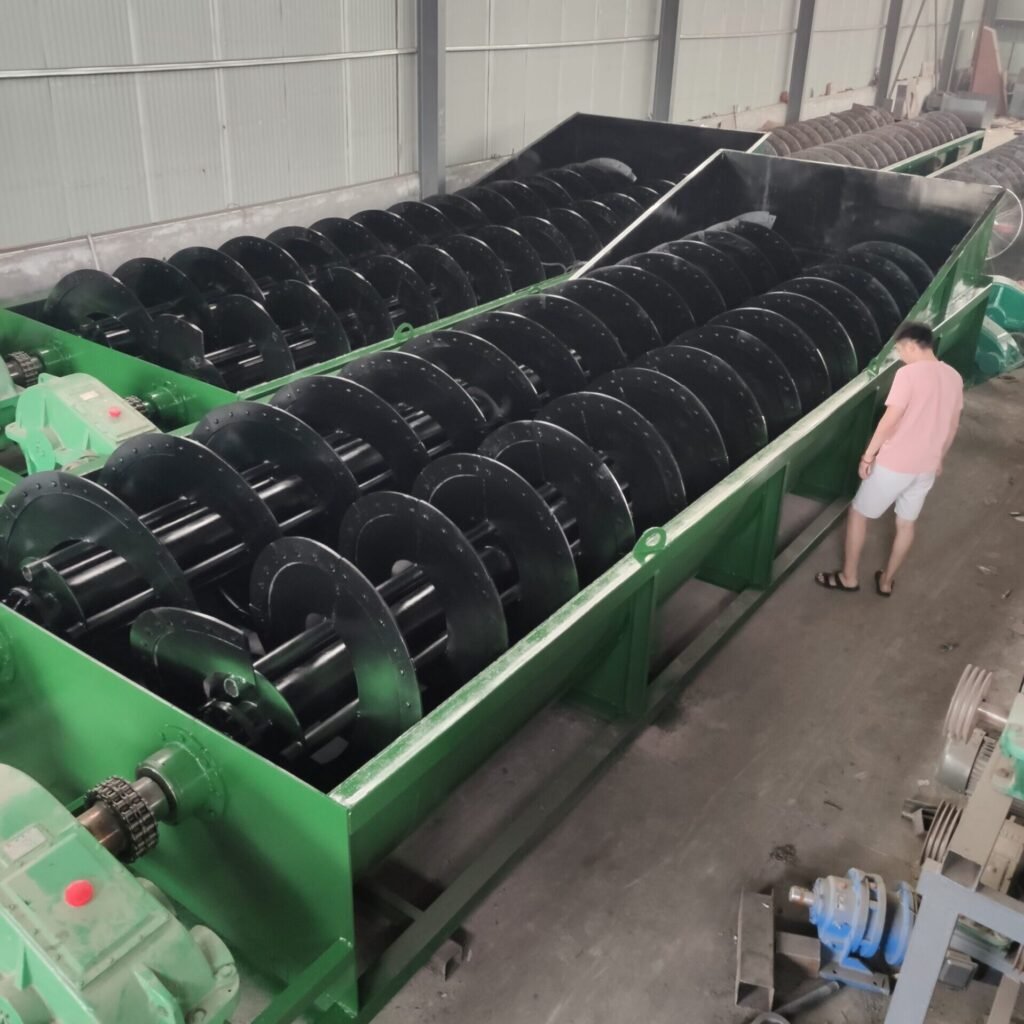
Keywords: Spiral Sand Washing Machine, Sand Cleaning Equipment Comparison
Introduction to Sand Cleaning Equipment
In industries such as mining, construction, and aggregates, sand cleaning is a crucial process that ensures the quality and usability of sand. Several types of sand cleaning equipment are available, each with its own advantages and disadvantages. This article compares spiral sand washing machines with other sand cleaning equipment, highlighting the differences in performance, efficiency, and suitability for various applications.
Spiral Sand Washing Machines vs. Wheel Sand Washing Machines
Wheel sand washing machines are a popular alternative to spiral sand washing machines. While both types of equipment are used for cleaning sand, they differ in several key aspects.
Spiral sand washing machines use a continuous spiral screw to move sand through the machine, while wheel sand washing machines use a rotating wheel to lift and wash the sand. The spiral design ensures thorough cleaning and classification, while the wheel design is generally simpler and may be easier to maintain.
- Efficiency: Spiral sand washing machines typically offer more efficient sand cleaning due to the continuous motion of the spiral screw. They can handle larger volumes of sand and provide better separation of impurities. Wheel sand washing machines, on the other hand, may be less efficient in removing fine particles and impurities.
- Water Usage: Spiral sand washing machines are generally more water-efficient because the spiral design allows for better control of water flow and minimizes waste. Wheel sand washing machines may use more water and may require additional settling tanks to manage wastewater.
- Application Suitability: Spiral sand washing machines are better suited for larger operations where high efficiency and thorough cleaning are required. Wheel sand washing machines are often used in smaller operations where simplicity and ease of maintenance are more important.
Spiral Sand Washing Machines vs. Trommel Screens
Trommel screens are another type of equipment used for sand cleaning and classification. They operate differently from spiral sand washing machines and are often used in different applications.
- Design and Operation: Trommel screens use a rotating cylindrical drum with screens to separate sand based on particle size. As the drum rotates, sand passes through the screens, with finer particles falling through and larger particles being discharged at the end. Spiral sand washing machines, in contrast, use a spiral screw to move and clean the sand, with a focus on removing impurities and classifying the sand.
- Efficiency: Trommel screens are effective at classifying sand by size but may not be as efficient in removing impurities like clay and silt. Spiral sand washing machines excel in both cleaning and classification, making them a more versatile option for producing high-quality sand.
- Water and Energy Usage: Trommel screens generally use less water than spiral sand washing machines, as they rely more on mechanical separation. However, they may require additional equipment, such as settling tanks or dewatering screens, to manage water and fine particles.
- Application Suitability: Trommel screens are commonly used in applications where size classification is the primary goal, such as in aggregate production or recycling operations. Spiral sand washing machines are better suited for applications that require both cleaning and classification, such as in mining or construction projects.
Spiral Sand Washing Machines vs. Hydrocyclones
Hydrocyclones are another type of sand cleaning equipment that is often compared with spiral sand washing machines. They use a different method for separating impurities and classifying sand.
- Design and Operation: Hydrocyclones use centrifugal force to separate particles based on size and density. Sand and water are fed into the hydrocyclone at high speed, creating a vortex that separates the lighter impurities from the heavier sand particles. Spiral sand washing machines use a mechanical spiral screw to move and clean the sand, focusing on removing impurities and classifying the sand by particle size.
- Efficiency: Hydrocyclones are highly efficient at separating fine particles and impurities, but they may not be as effective at cleaning larger particles or providing consistent sand quality. Spiral sand washing machines offer more consistent results in terms of both cleaning and classification, making them a preferred choice for producing high-quality sand.
- Water and Energy Usage: Hydrocyclones are generally more energy-efficient than spiral sand washing machines, as they rely on the force of the water flow rather than mechanical movement. However, they may require more complex water management systems to handle the high-speed water flow and fine particles.
- Application Suitability: Hydrocyclones are best suited for applications where fine particle separation is the primary goal, such as in mineral processing or wastewater treatment. Spiral sand washing machines are more versatile and can be used in a wider range of applications, including mining, construction, and aggregate production.
Conclusion: Choosing the Right Sand Cleaning Equipment
When comparing spiral sand washing machines with other types of sand cleaning equipment, it’s essential to consider the specific needs of your operation. Spiral sand washing machines offer a balance of efficiency, versatility, and thorough cleaning that makes them a preferred choice for many industries. However, other equipment like wheel sand washing machines, trommel screens, and hydrocyclones may be better suited for specific applications. By understanding the strengths and weaknesses of each type of equipment, operators can make informed decisions that enhance their sand cleaning processes and improve overall production quality.

No responses yet